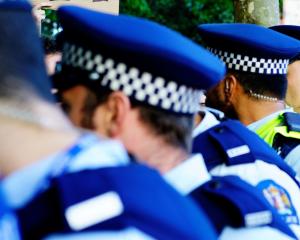A faulty test may be why Hastings District Council was unaware for five days that the Havelock North water supply was contaminated.
In a talking point in today's Hawke's Bay Today, Lawrence Yule, Hastings mayor, said the council now believed the water was likely to have been contaminated with E.coli on August 8, five days before it received such an indication. This was because of the prevalence of the campylobacter disease in the Havelock North population.
Since the outbreak, around 4700 people have been affected by the illness, and two have died while having it.
Before the contamination the council were testing the water supply twice a week in line with New Zealand drinking water standards.
Although Mr Yule said the water was likely to have been contaminated on the Monday, a test the next day did not reveal any contamination.
"This means that people were drinking contaminated water for about five days before health authorities noticed a significant amount of illness and the council received an abnormal indicator test from a sample taken on Thursday," he said.
"We know the Tuesday test did not pick up a presence of E.coli which is the indicator organism. The reason for this is unknown."
A Hastings District Council spokeswoman said there was a possibility the test taken on Tuesday had been faulty.
Council was not considering any other possibilities for the test result at this stage.
Water treatment specialist Iain Rabbitts also said it was unlikely, but possible that the test simply did not detect any contamination.
A sample might only contain a small amount of water, when "thousands of litres are going past".
"Unless the concentration of the bacteria is such and the flow path is right there is a possibility you're just going to get a sample that's not got it," he said. "That doesn't mean it's not in the water, it just means its not in that sample."
Although it was easy in hindsight to say the council should have done more, Mr Rabbits said the council were working within a system.
"The only thing they could have done is they were doing the minimal level of sampling they had to do, maybe they could have done more," he said, "but if all the steps that were supposed to be done were done, then its very difficult to say you should have done something different."
Mr Yule said had Tuesday's test picked up the contamination, the number of people affected would have been "dramatically lowered", as the water supply would have been chlorinated up to three days earlier than it did.
"Despite the best of intentions by regulators and systems the bugs have beaten the testing regime."
Without prejudging any investigation, he said the main contributing factor to the number of people affected was because nobody knew the water was contaminated.
In the third week since the outbreak, public meetings will be held tonight and tomorrow to update Havelock North residents on the contamination, and answer questions.
Ahead of this, a community forum, called H 2 Know, was held last night at the Common Room in Hastings.
A group of concerned residents - including Hawke's Bay Regional and Hastings District Council candidates, Tukituki Labour candidate Anna Lorck, former and incumbent councillors - gathered to share information, and concerns, and formulate a way to move forward with positive change around water in Hawke's Bay.











